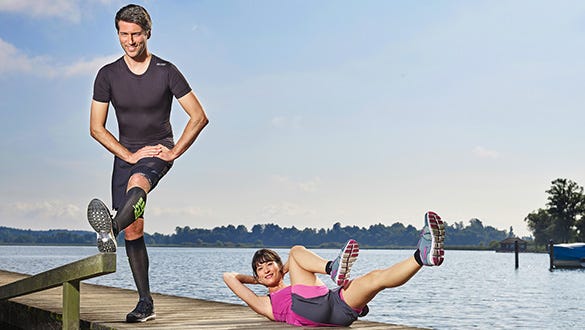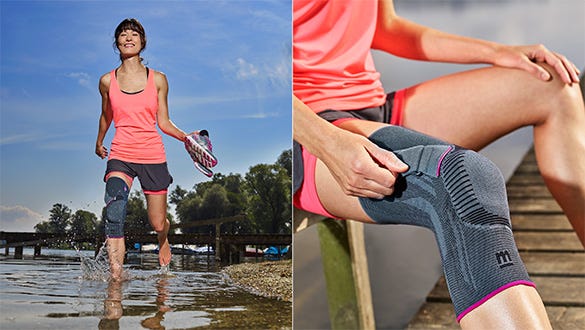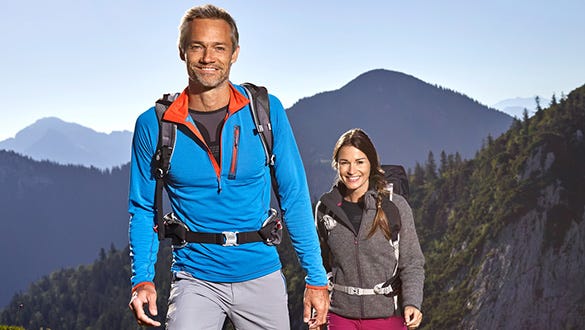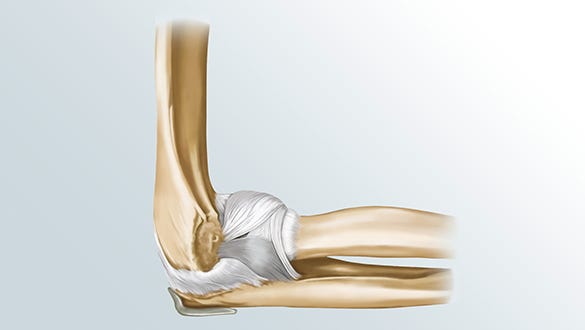- Free First Class Delivery
- Buyer Protection
- Secure Online Shopping
- Healthcare Professional? Click here
Exercises


Categories
Exercises – The art of flexibility and strength
Back pain, a stiff neck or heavy legs – we can pretty much all relate to all or one of these. However exercise can be taken as a preventative measure. There's a tremendous selection of excercises and classes, some of which we can only guess from the exotic names what they actually are. As a rule, these are gymnastic exercises that can be done with or without music, with or without choreography, with equipment or without, alone, or in a group. Compared to endurance sports, which mainly train the cardiovascular system, exercises focus on the specific strengthening and mobilisation of the musculature.
Spoilt for choice
There are so many different forms of exercise: they can either be aimed at training the whole body or targeted to certain areas such as the tummy, legs, bottom, back or even the veins. Young mothers go to postnatal classes to get back into shape, swimming enthusiasts take part in aqua gymnastics and skiers do their skiing exercises. Those of us who would like to loosen up do stretching exercises, while other sports fans stay fit with aerobics, yoga or Pilates. And, not to be forgotten: physiotherapy, which plays an essential role in the treatment of many disorders.
What good do they do?
Doing exercises regularly helps banish symptoms permanently but can also provide a positive feeling for your own body. Physical exercises strengthen the body's muscles, loosen up the muscles and sharpens the interplay between the muscle groups. Exercise help you strengthen neglected muscle groups and restore your postural balance. Gentle stretching loosens tense muscles and reduces stress.
Getting started
If you haven't done any sport or exercise for a long time, it's better to ask your doctor for advice first. Together you can determine your level of fitness and he/she will help you choose the right sort of exercise to suit your needs. Once you have been given the green light, you can crack on practically wherever and whenever you like: at the gym, sports club, at home in the lounge or even at the office. Fitness DVDs, magazines, television and internet enable you train on your own too. The ancient Greeks traditionally trained naked. Even today you don't need to invest much money in your gear: tracksuit trousers, a T-shirt, a mat – and off you go. In many cases you don't even need sports shoes. But please take it easy to begin with and find your limits!
But you must do it properly
Always make sure you carry out the exercises correctly, otherwise they can do more harm than good. For example, you should avoid a hollow back by rotating your pelvis backwards when standing or pressing your lower back against the floor when doing sit-ups. Stretching exercises should be done gently. If you over stretch, you may tear fibres in your muscles, tendons or ligaments. To be on the safe side, you might want to train at a sports club or at the gym. Trained staff will ensure you that do the exercises properly and will correct you if necessary. If you train at home, at least make sure you have good quality instructions on DVDs or websites and follow these as closely as possible. Checking your posture in the mirror can also help.
Exercices: training (almost) without risk
First the good news: gymnastics as a type of sport is associated with a very low risk of injury or overstrain. Nevertheless, muscle, tendon, joint or ligament injuries do occur in some cases. Particularly when athletes over stretch or sprain their ankle during exercises. This is when orthopaedic medical devices such as the Levamed or Levamed active supports from medi are called for. These are medical devices to support muscles and joints. It is often advisable to only wear supports while you’re up and about and to take them off when sitting for a while or at night. Supports can help relieve and stabilise affected joints. Irrespective of whether you have problems with your shoulder, arm or hand or with your knee or ankle joint – the aim of supports is to alleviate pain and relieve and stabilise affected joints. They also help you to regain your mobility quickly and encourage correct posture. Supports do not cause muscle atrophy (loss of muscle mass), instead they boost the entire locomotor apparatus.










